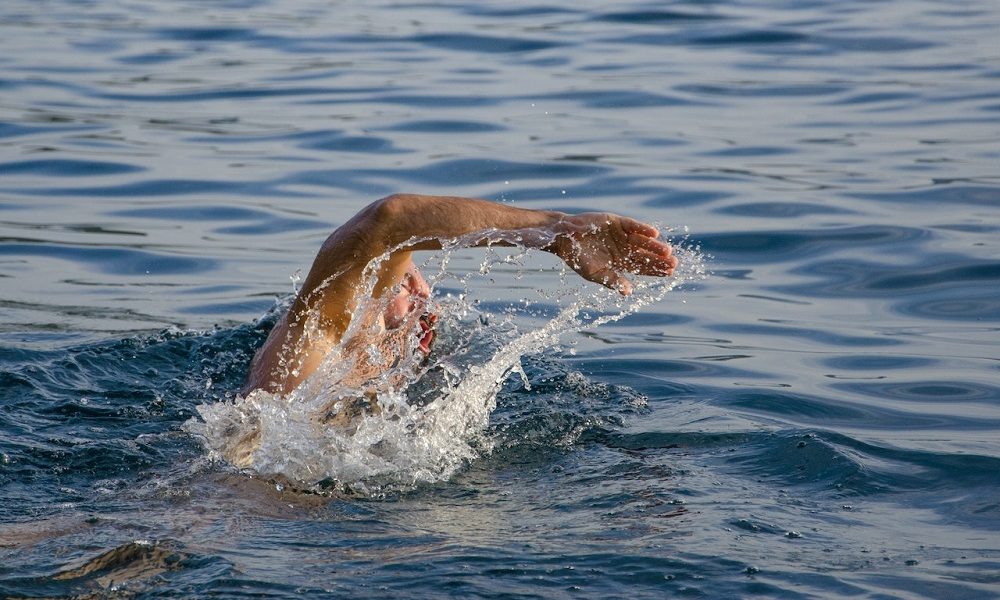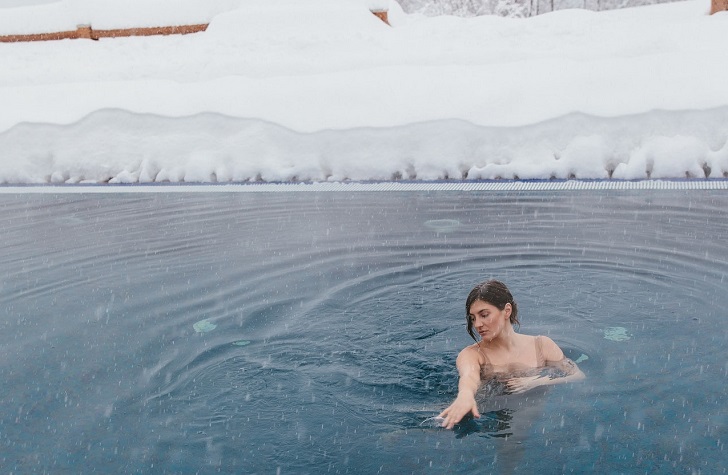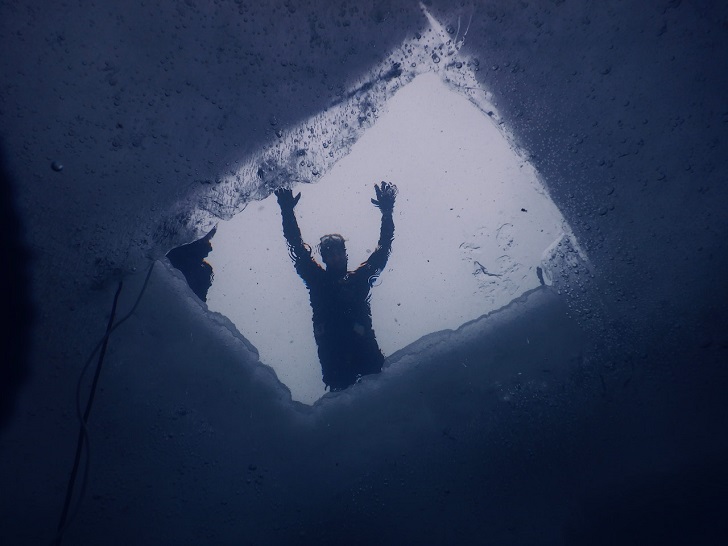
Swimming in Cold Water for Improved Health: How to Do It

As temperatures plummet and waters turn frigid, some individuals embrace the icy plunge for a revitalizing and thrilling experience—a cold-water swim that fosters a unique connection with nature. Yet, along with its exhilaration, cold-water swimming poses challenges and risks that necessitate careful management.
This article delves into the advantages of cold-water swimming while offering crucial guidance to ensure safe and enjoyable experiences.
Advantages of Cold-Water Swimming
Enhanced Immune System: Cold-water immersion is believed to stimulate white blood cell production, fortifying the immune system. Regular exposure may bolster resilience against common illnesses.
Elevated Mood: The shock of cold water prompts the release of endorphins, natural mood enhancers. Many enthusiasts note feeling happier and more relaxed post-cold-water swim.
Improved Circulation: Cold-water immersion boosts blood circulation, benefiting cardiovascular health. Constriction of blood vessels prompts the heart to work harder, potentially strengthening it over time.
Increased Metabolism: Swimming in cold water can rev up metabolism, aiding in calorie burning and potentially supporting weight management.
Stress Reduction: Cold water calms the nervous system, which helps alleviate stress and anxiety. It acts as a natural mindfulness practice, fostering relaxation and mental clarity.
Now, armed with an understanding of these potential benefits, let’s explore how to navigate cold-water swimming safely and effectively.

Yaroslav Shuraev/ Pexels | In cold water, we find clarity, both in the water and in our minds.
Choose the Right Location
Selecting the right location for your cold-water swim is crucial. Look for clean, safe bodies of water like lakes, rivers, or dedicated open-water swimming spots. Avoid swimming in unfamiliar or potentially dangerous areas, and always check local advisories or warnings before entering the water.
Know the Water Temperature
Before you take the plunge, know the water temperature. A water temperature below 50°F (10°C) is considered very cold, and extreme caution is required. Cold water can shock your system, so it’s essential to acclimate gradually.
Acclimate Gradually
Acclimating to cold water is essential to avoid the shock that can lead to cold water shock, which can be life-threatening. Start with short dips or swims in slightly cooler water and gradually build up to longer sessions in colder temperatures. Your body will adapt over time.
Dress Appropriately
Wearing the right gear is crucial for cold-water swimming. Invest in a good-quality wetsuit designed for cold water, and consider additional neoprene accessories like gloves, booties, and a cap to minimize heat loss. A swim cap can also help keep your ears warm and protect them from the cold.

SHVETS production/ Pexels | Wetsuits are not just for warmth; they provide buoyancy and help swimmers stay afloat.
Safety First
Never swim alone in cold water. Always have a swim buddy or someone onshore to watch over you. Additionally, ensure someone knows your swim plan, including your intended route and estimated duration.
Warm-Up Before You Swim
Before diving in, do light exercises or stretches to warm up your muscles. This will help prevent cramping and make your swim more comfortable.
Entry and Exit Carefully
When entering the water, take it slow. Walk in gradually to allow your body to adjust to the temperature. When exiting, move quickly to get out of the cold water and into a warm environment. Have warm clothing and towels ready to wrap yourself in when you’re out.
Controlled Breathing
Control your breathing when you enter cold water. Slow, deep breaths will help you relax and adapt to the shock. Avoid gasping for air, as this can lead to hyperventilation.

Svetlana Obysova/ Pexels | Your comfort zone ends where the cold water begins
Swim Slowly and Stay Close to the Shore
In cold water, your body will cool down faster than in warm water. Swim slower than you would in warmer conditions and stay relatively close to the shore. This allows for quick and easy access to warmth if needed.
Listen to Your Body
Pay close attention to how your body feels during the swim. If you start shivering uncontrollably, experience numbness, or feel extremely tired, it’s time to get out of the water and warm up immediately.
Post-Swim Warm-Up
After your cold-water swim, it’s crucial to warm up properly. Change into dry, warm clothing and sip on a warm beverage like herbal tea or hot chocolate. This will help raise your core body temperature and prevent afterdrop, a condition where your body temperature continues to drop after leaving the cold water.
More in Body
-
`
Novak Djokovic’s 25th Grand Slam – What to Expect in 2025?
As the tennis season draws to a close, Novak Djokovic faces an unprecedented challenge: ending a year without a Grand Slam...
September 22, 2024 -
`
3 Tips for Rotator Cuff Health to Speed Up Shoulder Recovery
Rotator cuff health tips can help reduce pain and improve mobility after an injury. The rotator cuff is crucial for shoulder...
September 12, 2024 -
`
Christina Aguilera Impresses Fans and Facial Aesthetics Docs With Ultra-Slim & Youthful Look
Christina Aguilera’s weight loss is a hot topic these days, and for good reason. After stepping out of the spotlight for...
September 7, 2024 -
`
Visiting Brussels, Belgium, For the First Time? Here is What You Should See & Do
When exploring the capital of Belgium, you might wonder what the top things to see and do are. This cosmopolitan hub,...
August 28, 2024 -
`
The Pork Adobo Recipe to Take Your Dinner to the Next Level
The pork adobo recipe is a culinary gem that truly showcases the heart of Filipino cuisine. This dish, deeply rooted in...
August 21, 2024 -
`
Can I Shrink My Liver in 2 Days? A Guide to Liver Shrinking Diets
Can I shrink my liver in 2 days? This question is often asked by individuals preparing for weight loss surgery or...
August 16, 2024 -
`
George Conway Weight Loss – How Did He Shed 40 Pounds?
George Conway, the legal eagle turned political commentator, has recently captured the public’s attention for more than his sharp legal mind....
August 5, 2024 -
`
Japan Trip Cost in 2024: A Comprehensive Guide For Beginners
How much would a trip to Japan cost? Well, it is a dream destination for many, but understanding the expenses involved can...
July 31, 2024 -
`
Healthy and Quick Pescatarian Breakfast Recipes
When it comes to breakfast, choosing a pescatarian diet can be both nutritious and exciting. Incorporating seafood and plant-based ingredients into...
July 25, 2024










You must be logged in to post a comment Login